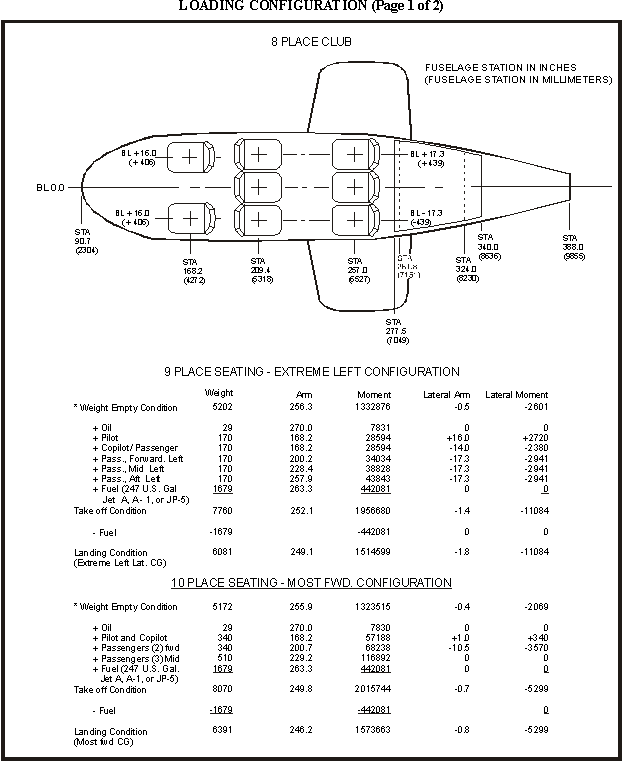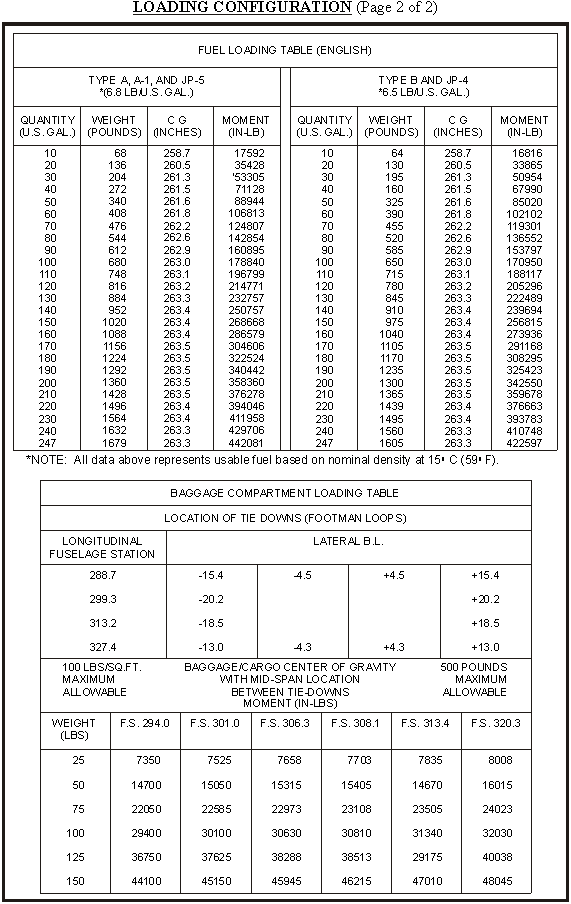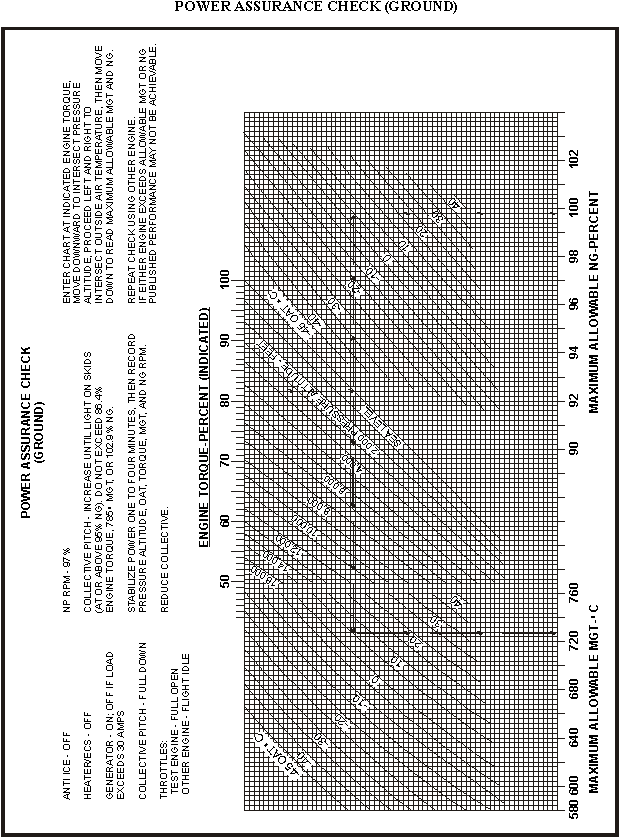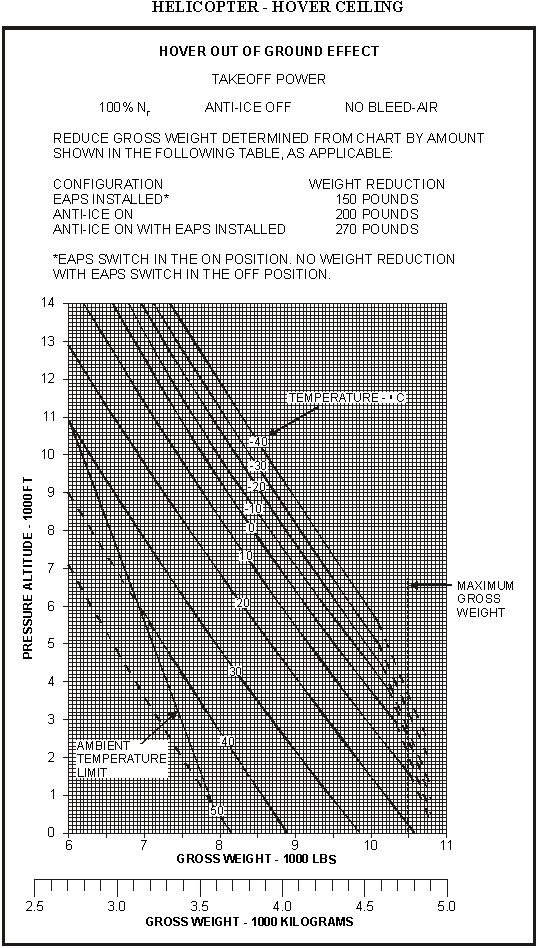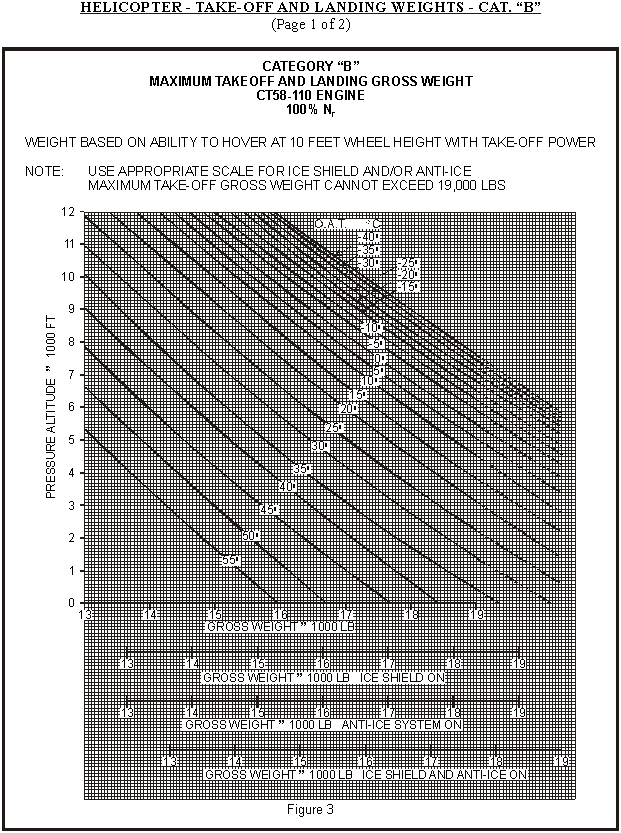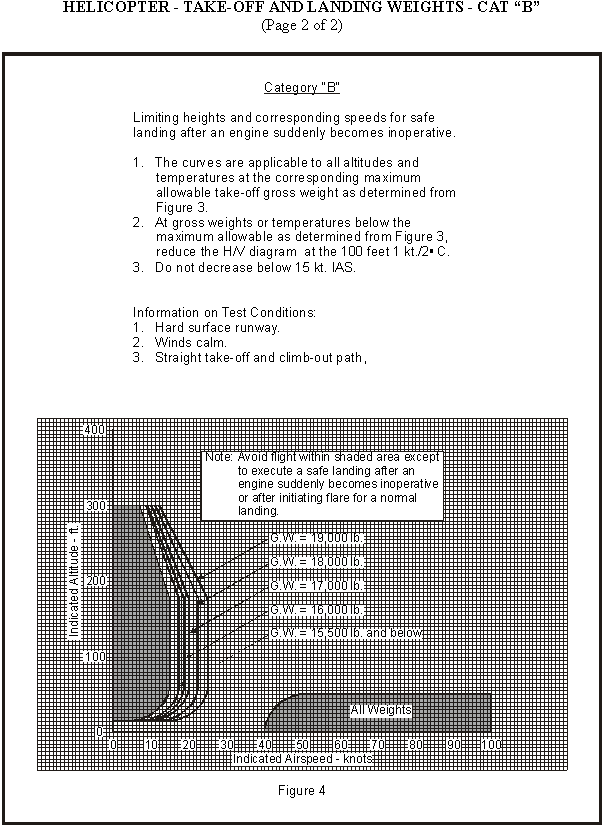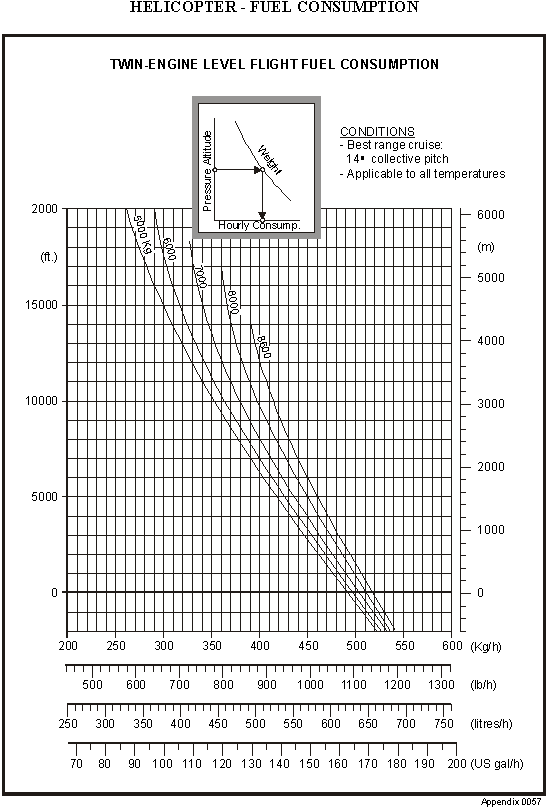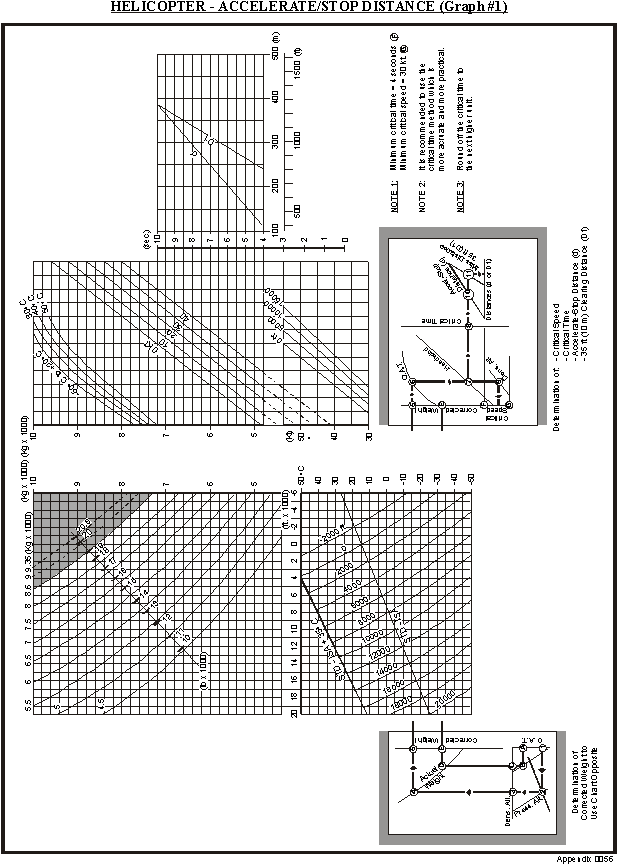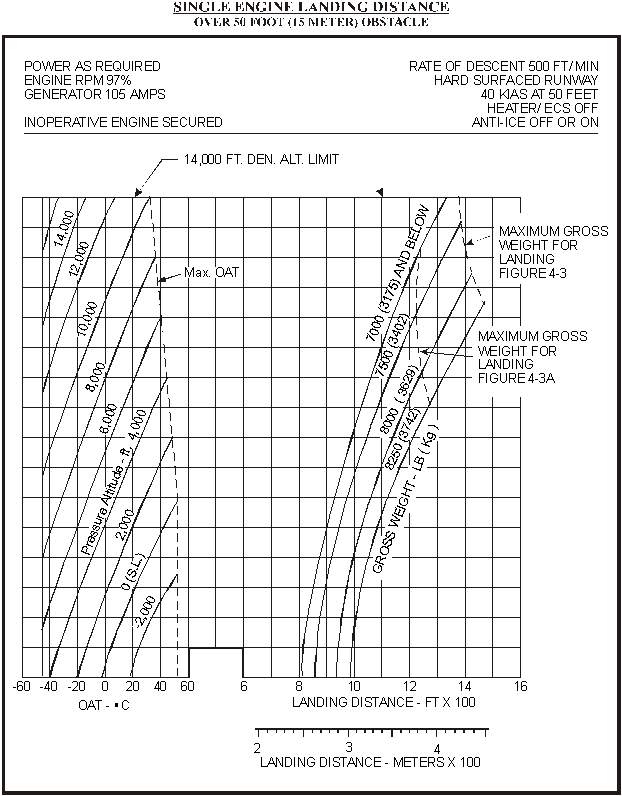Study and Reference Guide - Type Rating - Helicopter
(HATRA Exam)
First Edition, January 2002, Revised October 2004
Table of Contents
- General
- Section 1: Air Law and Procedures
- 1.1−1.5 RAC
- 1.6 NOTAM
- 1.7 A.I.P. Canada
- 1.8 Transportation Safety Board of Canada (TSB) - (A.I.P. GEN 3.0)
- 1.9 Air Traffic Services and Procedures
- 1.10 Operations in Domestic Airspace
- Section 2: Airframes, Engines and Aircraft Systems
- Section 3: Meteorology
- 3.1 The Earth's Atmosphere
- 3.2 Atmospheric Pressure
- 3.3 Meteorological Aspects of Altimetry
- 3.4 Temperature
- 3.5 Moisture
- 3.6 Stability and Instability
- 3.7 Clouds
- 3.8 Turbulence
- 3.9 Wind
- 3.10 Air Masses
- 3.11 Fronts
- 3.12 Frontal Weather
- 3.13 Aircraft Icing
- 3.14 Thunderstorms
- 3.15 Surface Based Layers
- 3.16 Meteorological Services Available to Pilots
- 3.17 Aviation Weather Reports
- 3.18 Aviation Forecasts
- 3.19 Weather Maps and Prognostic Charts
- Section 4: Instruments
- Section 5: Navigation - General
- Section 6: Radio Communications and Aids to Navigation - Basic principles and Use
- Section 7: Flight Operations
- Section 8: Theory of Flight
- Section 9: Human Factors
- Examination Results - Decoding
- Tables and Charts
- Recommended Study Material
- Enquiries
You may reproduce this guide as required and it can be found at
https://tc.canada.ca/en/aviation
General
The conditions of issue of all flight crew licences are stated in the Canadian Aviation Regulations (CARs).
Examinations
Applicants for the Commercial Pilot Licence in the Helicopter Category shall demonstrate their knowledge by writing a Transport Canada multiple choice examination on subjects contained in this guide.
| Examination | Questions | Time Limit | Pass Mark |
|---|---|---|---|
| Air Regulations and Air Traffic Procedures, Helicopter Operations and Navigation General - Meteorology, Radio Aids to Navigation and Flight Planning - HATRA | 50 | 3½ hours | 70% |
Knowledge Requirements
Applicants for a Type Rating - Helicopter are expected to have mastered the various subjects included in this guide in addition to material required to obtain a Commercial Pilot Licence - Helicopter (see TP 2476E). All applicants must also be able to read the examination questions in either English or French without assistance.
Subjects marked with a bullet () are considered essential knowledge for the Type-Rating - Helicopter applicants.
Section 1: Air Law and Procedures
1.1-1.5 CARs
| S&RG number | Subject | ||
|---|---|---|---|
| CARs | |||
| 1.1 | bullet | Part I - General Provisions | |
| 1.1.1 | bullet | 101 - Interpretation | |
| .1 | 101.01 Interpretation | ||
| 1.1.2 | 103 - Administration and Compliance | ||
| .1 | 103.02 Inspection of Aircraft, Requests for Production of Documents and Prohibitions | ||
| .2 | 103.03 Return of Canadian Aviation Documents | ||
| .3 | 103.04 Record Keeping | ||
| 1.2 | bullet | Part III - Aerodromes and Airports | |
| 1.2.1 | bullet | 300 - Interpretation | |
| .1 | 300.01 Interpretation | ||
| 1.2.2 | bullet | 301 - Aerodromes | |
| .1 | 301.01 Application | ||
| .2 | 301.04 Markers and Markings | ||
| .3 | 301.06 Wind Direction Indicator | ||
| .4 | 301.07 Lighting | ||
| .5 | 301.08 Prohibitions | ||
| .6 | 301.09 Fire Prevention | ||
| 1.2.3 | 302 - Airports | ||
| .1 | 302.10 Prohibitions | ||
| .2 | 302.11 Fire Prevention | ||
| 1.3 | Part IV - Personnel licensing and training | ||
| 1.3.1 | 400 - General | ||
| .1 | 400.01 Interpretation | ||
| 1.3.2 | 401 - Flight Crew Permits, Licences and Ratings | ||
| .1 | 401.03 Requirements to Hold a Flight Crew Permit, Licence or Rating | ||
| .2 | 401.04 Flight Crew Members of Aircraft Registered in Contracting States other than Canada | ||
| .3 | 401.05 Recency Requirements | ||
| .4 | 401.08 Personal Logs | ||
| .5 | 401.10 Crediting of Flight Time Acquired by a Co-pilot | ||
| .6 | 401.35 ATPL Privileges - Helicopter | ||
| .7 | 401.44 VFR Over-The-Top Rating | ||
| .8 | 401.61 Flight Instructor Ratings | ||
| 1.3.3 | 404 - Medical Requirements | ||
| .1 | 404.03 Requirement to Hold a Medical Certificate (MC) | ||
| .2 | 404.04 Issuance and Validity Period of MC | ||
| .3 | 404.06 Prohibitions regarding Exercise of Privileges | ||
| .4 | 404.10 MC Requirements for Personnel Licences | ||
| .5 | 404.18 Permission to Continue to Exercise the Privileges of a Licence or Rating | ||
| 1.4 | Part VI - General Operating and Flight Rules | ||
| 1.4.1 | 600 - Interpretation | ||
| .1 | 600.01 Interpretation | ||
| 1.4.2 | bullet | 601 - Airspace Structure, Classification and Use | |
| .1 | bullet | 601.01 Airspace Structure | |
| .2 | bullet | 601.02 Airspace Classification | |
| .3 | bullet | 601.03 Transponder Airspace | |
| .4 | bullet | 601.04 IFR or VFR Flight in Class F Special Use Restricted Airspace or Class F Special Use Advisory Airspace | |
| .5 | bullet | 601.06 VFR Flight in Class A Airspace | |
| .6 | bullet | 601.07 VFR Flight in Class B Airspace | |
| .7 | bullet | 601.08 VFR Flight in Class C Airspace | |
| .8 | bullet | 601.09 VFR Flight in Class D Airspace | |
| Forest Fire Flight Restrictions | |||
| .9 | 601.14 Interpretation | ||
| .10 | 601.15 Forest Fire Aircraft Operating Restrictions | ||
| .11 | 601.16 Issuance of NOTAM for a Forest Fire Aircraft Operating Restrictions | ||
| .12 | 601.17 Exceptions | ||
| 1.4.3 | 602 - Operating and Flight Rules | ||
| General | |||
| .1 | 602.01 Reckless or Negligent Operation of Aircraft | ||
| .2 | 602.02 Fitness of Flight Crew Members | ||
| .3 | 602.03 Alcohol or Drugs - Crew Members | ||
| .4 | 602.04 Alcohol or Drugs - Passengers | ||
| .5 | 602.06 Smoking | ||
| .6 | 602.07 Aircraft Operating Limitations | ||
| .7 | 602.08 Portable Electronic Devices | ||
| .8 | bullet | 602.09 Fuelling with Engines Running | |
| .9 | bullet | 602.10 Starting and Ground Running of Aircraft Engines | |
| .10 | bullet | 602.11 Aircraft Icing | |
| .11 | bullet | 602.12 Overflight of Built-up Areas or Open-Air Assemblies of Persons during Take-offs, Approaches and Landings | |
| .12 | bullet | 602.13 Take-offs, Approaches and Landings within Built-up Areas of Cities and Towns | |
| .13 | bullet | 602.14 Minimum Altitudes and Distances | |
| .14 | bullet | 602.15 Permissible Low Altitude Flight | |
| .15 | bullet | 602.16 Flights over Open-Air Assemblies of Persons or Built-up Areas - Helicopters with External Loads | |
| .16 | bullet | 602.17 Carriage of Persons during Low Altitude Flight | |
| .17 | 602.19 Right-of-Way - General | ||
| .18 | 602.20 Right-of-Way - Aircraft Manoeuvering on Water | ||
| .19 | 602.21 Avoidance of Collision | ||
| .20 | 602.23 Dropping of Objects | ||
| .21 | 602.24 Formation Flight | ||
| .22 | 602.25 Entering or Leaving an Aircraft in Flight | ||
| .23 | 602.26 Parachute Descents | ||
| .24 | 602.27 Aerobatic Manoeuvres - Prohibited Areas and Flight Conditions | ||
| .25 | 602.28 Aerobatic Manoeuvres with Passengers | ||
| .26 | 602.30 Fuel Dumping | ||
| .27 | 602.31 Compliance with Air Traffic Control Instructions and Clearances | ||
| .28 | 602.34 Cruising Altitudes and Cruising Flight Levels | ||
| .29 | bullet | 602.35 Altimeter Setting and Operating Procedures in the Altimeter-Setting Region | |
| .30 | bullet | 602.36 Altimeter Setting and Operating Procedures in the Standard Pressure Region | |
| .31 | bullet | 602.37 Altimeter Setting and Operating Procedures in Transition Between Regions | |
| .32 | 602.38 Flight over the High Seas | ||
| .33 | 602.39 Transoceanic Flight | ||
| .34 | 602.40 Landing at or Take-off from an Aerodrome at Night | ||
| Operational and Emergency Equipment Requirements | |||
| .35 | bullet | 602.57 Application | |
| .36 | bullet | 602.58 Prohibition | |
| .37 | bullet | 602.59 Equipment Standards | |
| .38 | bullet | 602.60 Requirements for Power-driven Aircraft | |
| .39 | bullet | 602.61 Survival Equipment - Flights over Land | |
| .40 | bullet | 602.62 Life Preservers and Personal Flotation Devices | |
| .41 | bullet | 602.63 Life Rafts and Survival Equipment - Flights over Water | |
| Flight Preparation, Flight Plans and Flight Itineraries | |||
| .42 | bullet | 602.70 Interpretation | |
| .43 | bullet | 602.71 Pre-flight Information | |
| .44 | bullet | 602.72 Weather Information | |
| .45 | bullet | 602.73 Requirements to file a Flight Plan or a Flight Itinerary | |
| .46 | bullet | 602.74 Contents of a Flight Plan or Flight Itinerary | |
| .47 | bullet | 602.75 Filing of a Flight Plan or Flight Itinerary | |
| .48 | bullet | 602.76 Changes in the Flight Plan | |
| .49 | bullet | 602.77 Requirement to File an Arrival Report | |
| .50 | bullet | 602.78 Contents of an Arrival Report | |
| .51 | bullet | 602.79 Overdue Aircraft Reports | |
| Pre-Flight and Fuel Requirements | |||
| .52 | 602.86 Carry-on Baggage, Equipment and Cargo | ||
| .53 | 602.87 Crew Member Instructions | ||
| .54 | 602.88 Fuel Requirements | ||
| .55 | 602.89 Passenger Briefings | ||
| Operations at or in the Vicinity of an Aerodrome | |||
| .56 | 602.96 General | ||
| .57 | 602.97 VFR and IFR Aircraft Operations at Uncontrolled Aerodromes within an MF Area | ||
| .58 | 602.98 General MF Reporting Requirements | ||
| .59 | 602.99 MF Reporting Procedures before Entering Manoeuvring Area | ||
| .60 | 602.100 MF Reporting Procedures on Departure | ||
| .61 | 602.101 MF Reporting Procedures on Arrival | ||
| .62 | 602.102 MF Reporting Procedures when Flying Continuous Circuits | ||
| .63 | 602.103 Reporting Procedures when Flying through an MF Area | ||
| .64 | 602.105 Noise Operating Criteria | ||
| Visual Flight Rules | |||
| .65 | 602.114 Minimum Visual Meteorological Conditions for VFR Flight in Controlled Airspace | ||
| .66 | 602.115 Minimum Visual Meteorological Conditions for VFR Flight in Uncontrolled Airspace | ||
| .67 | 602.116 VFR Over-The-Top | ||
| .68 | 602.117 Special VFR Flight | ||
| Radiocommunications | |||
| .69 | 602.136 Continuous Listening Watch | ||
| .70 | 602.138 Two-way Radiocommunication Failure in VFR Flight | ||
| Emergency Communications and Security | |||
| .71 | bullet | 602.143 Emergency Radio Frequency Capability | |
| .72 | bullet | 602.144 Interception Signals, Interception of Aircraft and Instructions to Land | |
| .73 | bullet | 602.145 ADIZ | |
| .74 | bullet | 602.146 SCATANA Plan | |
| 1.4.4 | 604 - Private Operator Passenger Transportation | ||
| General | |||
| .1 | 604.01 Application | ||
| Flight Operations | |||
| .2 | 604.10 Checklist | ||
| .3 | 604.11 Operational Flight Data Sheet | ||
| .4 | 604.16 Flight Attendant Requirement | ||
| .5 | 604.17 Cabin Safety Procedures | ||
| .6 | 604.18 Briefing of Passengers | ||
| Flight Time and Flight Duty Time Limitations and Rest Periods | |||
| .7 | 604.26 Flight Time Limitations | ||
| .8 | 604.27 Flight Duty Time Limitations and Rest Periods | ||
| .9 | 604.28 Split Flight Duty Time | ||
| .10 | 604.29 Extension of Flight Duty Time | ||
| .11 | 604.30 Unforeseen Operational Circumstances | ||
| .12 | 604.31 Delayed Reporting Time | ||
| .13 | 604.32 Requirements for Time Free from Flight Duty | ||
| .14 | 604.33 Flight Crew Positioning | ||
| Emergency Equipment | |||
| .15 | 604.38 Survival Equipment | ||
| .16 | 604.39 First Aid Kits | ||
| .17 | 604.41 Hand-Held Fire Extinguishers | ||
| Personnel Requirements | |||
| .18 | 604.65 Designation of Pilot-in-command and Second-in-command | ||
| .19 | 604.66 Crew Member Qualifications | ||
| .20 | 604.68 Validity Period | ||
| .21 | 604.73 Training Program | ||
| Manuals | |||
| .22 | 604.80 Requirements relating to Operations Manual | ||
| .23 | 604.81 Contents of Operational Manual | ||
| .24 | 604.82 Distribution of Operations Manual | ||
| .25 | 604.83 Aircraft Operating Manual | ||
| .26 | 604.84 Standard Operating Procedures | ||
| 1.4.5 | 605 - Aircraft Requirements | ||
| General | |||
| .1 | 605.03 Flight Authority | ||
| .2 | 605.04 Availability of Aircraft Flight Manual | ||
| .3 | 605.05 Markings and Placards | ||
| .4 | 605.06 Aircraft Equipment Standards and Serviceability | ||
| .5 | 605.07 Minimum Equipment Lists | ||
| .6 | 605.08 Unserviceable and Removed Equipment - General | ||
| .7 | 605.09 Unserviceable and Removed Equipment - Aircraft with a Minimum Equipment List | ||
| .8 | 605.10 Unserviceable and Removed Equipment - Aircraft without a Minimum Equipment List | ||
| Aircraft Equipment Requirements | |||
| .9 | 605.14 Power-driven Aircraft - Day VFR | ||
| .10 | 605.15 Power-driven Aircraft - VFR OTT | ||
| .11 | 605.16 Power-driven Aircraft - Night VFR | ||
| .12 | 605.17 Use of Position and Anti-collision Lights | ||
| .13 | 605.22 Seat and Safety-Belt Requirements | ||
| .14 | 605.23 Restraint System Requirements | ||
| .15 | 605.24 Shoulder Harness Requirements | ||
| .16 | 605.25 General Use of Safety Belts and Restraint Systems | ||
| .17 | 605.26 Use of Passenger Safety Belts and Restraint Systems | ||
| .18 | 605.27 Use of Crew Member Safety Belts | ||
| .19 | 605.28 Child Restraint System | ||
| .20 | 605.29 Flight Control Locks | ||
| .21 | 605.30 De-icing or Anti-icing Equipment | ||
| .22 | bullet | 605.31 Oxygen Equipment and Supply | |
| .23 | bullet | 605.32 Use of Oxygen | |
| .24 | bullet | 605.33 Flight Data Recorders and Cockpit Voice Recorders | |
| .25 | bullet | 605.34 Use of Flight Data Recorders and Cockpit Voice Recorders | |
| .26 | bullet | 605.35 Transponder and Automatic Pressure Altitude Reporting Equipment | |
| .27 | bullet | 605.38 ELT | |
| .28 | bullet | 605.39 Use of ELT | |
| .29 | bullet | 605.40 ELT Activation | |
| .30 | 605.41 Standby Attitude Indicator | ||
| Aircraft Maintenance Requirements | |||
| .31 | 605.84 Aircraft Maintenance - General | ||
| .32 | 605.85 Maintenance Release and Elementary Work | ||
| .33 | 605.86 Maintenance Schedule | ||
| .34 | 605.87 Transfer of Aeronautical Products between Maintenance Schedules | ||
| .35 | 605.88 Inspection after Abnormal Occurrences | ||
| Technical Records | |||
| .36 | 605.93 Technical Records - General | ||
| .37 | 605.94 Journey Log Requirements | ||
| .38 | 605.95 Journey Log - Carrying on Board | ||
| .39 | 605.96 Requirements for Technical Records other than the Journey Log | ||
| .40 | 605.97 Transfer of Records | ||
| 1.4.6 | 606 - Miscellaneous | ||
| .1 | 606.01 Munitions of War | ||
| .2 | 606.03 Synthetic Flight Trainer | ||
| 1.5 | Part VII - Commercial Air Services | ||
| 1.5.1 | 700 - Commercial Air Services | ||
| General | |||
| .1 | 700.01 Definitions | ||
| Flight Time and Duty Time Limitations and Rest Periods | |||
| .2 | 700.15 Flight Time Limitations | ||
| .3 | 700.16 Flight Duty Time Limitations and Rest Periods | ||
| .4 | 700.17 Unforeseen Operational Circumstances | ||
| .5 | 700.18 Delayed Reporting Time | ||
| .6 | 700.19 Requirements for Time Free from Duty | ||
| .7 | 700.20 Flight Crew Positioning | ||
| .8 | 700.21 Flight Crew Members on Reserve | ||
| 1.5.2 | 702 - Aerial Work | ||
| General | |||
| .1 | 702.01 Application | ||
| Flight Operations | |||
| .2 | 702.13 Flight Authorization | ||
| .3 | 702.14 Operational Flight Plan | ||
| .4 | 702.16 Carriage of Persons | ||
| .5 | 702.17 VFR Flight Minimum Flight Visibility - Uncontrolled Airspace | ||
| .6 | 702.18 Night, VFR OTT and IFR Operations | ||
| .7 | 702.19 Entering or Leaving a Helicopter in Flight | ||
| .8 | 702.20 Aircraft Operating over Water | ||
| .9 | 702.21 Helicopter Class D External Loads | ||
| .10 | 702.22 Built-up Area and Aerial Work Zone | ||
| .11 | 702.23 Briefing of Persons other than Flight Crew Members | ||
| Aircraft Equipment Requirements | |||
| .12 | 702.42 Night and IMC Flights | ||
| .13 | 702.43 Additional Equipment for Single-pilot Operations | ||
| .14 | 702.44 Shoulder Harness | ||
| .15 | 702.45 External Load Equipment | ||
| Personnel Requirements | |||
| .16 | 702.64 Designation of Pilot-in-command and Second-in-command | ||
| .17 | 702.65 Flight Crew Member Qualifications | ||
| .18 | 702.67 Validity Period | ||
| Manuals | |||
| .19 | 702.83 Distribution of Company Operations Manuals | ||
| .20 | 702.84 Standard Operating Procedures | ||
| 1.5.3 | 703 - Air Taxi Operations | ||
| General | |||
| .1 | 703.01 Application | ||
| Flight Operations | |||
| .2 | 703.17 Flight Authorization | ||
| .3 | 703.18 Operational Flight Plan - Subsection (2) | ||
| .4 | 703.20 Fuel Requirements - Paragraph (b) | ||
| .5 | 703.21 Admission to Pilot's Compartment | ||
| .6 | 703.22 Transport of Passengers in Single-engined Aircraft | ||
| .7 | 703.23 Aircraft Operating over Water | ||
| .8 | 703.24 Number of Passengers in Single-engined Aircraft | ||
| .9 | 703.25 Carriage of External Loads | ||
| .10 | 703.26 Simulation of Emergency Situations | ||
| .11 | 703.27 VFR Flight Obstacle Clearance Requirements | ||
| .12 | 703.28 VFR Flight Minimum Flight Visibility - Uncontrolled Airspace | ||
| .13 | 703.29 VFR Flight Weather Conditions | ||
| .14 | 703.32 Enroute Limitations | ||
| .15 | 703.33 VFR OTT Flight | ||
| .16 | 703.34 Routes in Uncontrolled Airspace | ||
| .17 | 703.36 Minimum Altitudes and Distances | ||
| .18 | 703.37 Weight and Balance Control | ||
| .19 | 703.38 Passenger and Cabin Safety Procedures | ||
| .20 | 703.39 Briefing of Passengers | ||
| Aircraft Equipment Requirements | |||
| .21 | 703.64 General Requirements | ||
| .22 | 703.69 Shoulder Harness | ||
| Emergency Equipment | |||
| .23 | 703.82 Equipment Standards and Inspection | ||
| Personnel Requirements | |||
| .24 | 703.86 Minimum Crew | ||
| .25 | 703.87 Designation of Pilot-in-command and Second-in-command | ||
| .26 | 703.88 Flight Crew Member Qualifications | ||
| .27 | 703.91 Validity Period | ||
| .28 | 703.98 Training Program | ||
| Manuals | |||
| .29 | 703.106 Distribution of Company Operations Manual | ||
| .30 | 703.107 Aircraft Standard Operating Procedures | ||
| 1.5.4 | 704 - Commuter Operations | ||
| .1 | 704.01 Application | ||
| Flight Operations | |||
| .2 | 704.12 Operating Instructions | ||
| .3 | 704.13 General Operational Information | ||
| .4 | 704.16 Flight Authorization | ||
| .5 | 704.17 Operational Flight Plan - Subsection (2) | ||
| .6 | 704.19 Checklist | ||
| .7 | 704.20 Fuel Requirements - Paragraph (b) | ||
| .8 | 704.22 Simulation of Emergency Situations | ||
| .9 | 704.23 VFR Flight Obstacle Clearance Requirements | ||
| .10 | 704.24 VFR Flight Minimum Flight Visibility - Uncontrolled Airspace | ||
| .11 | 704.25 VFR Flight Weather Conditions | ||
| .12 | 704.28 VFR OTT Flight | ||
| .13 | 704.29 Routes in Uncontrolled airspace | ||
| .14 | 704.31 Minimum Altitudes and Distances | ||
| .15 | 704.32 Weight and Balance Control | ||
| .16 | 704.33 Apron and Cabin Safety Procedures | ||
| .17 | 704.34 Briefing of Passengers | ||
| Aircraft Performance Operation Limitations | |||
| .18 | 704.46 Take-off Weight Limitations | ||
| .19 | 704.48 Enroute Limitations with One Engine Inoperative | ||
| Aircraft Equipment Requirements | |||
| .20 | 704.62 General Requirements | ||
| .21 | 704.63 Operation of Aircraft in Icing Conditions | ||
| .22 | 704.68 Shoulder Harnesses | ||
| Emergency Equipment | |||
| .23 | 704.83 Hand-held Fire Extinguisher | ||
| Personnel Requirements | |||
| .24 | 704.107 Designation of Pilot-in-command and Second-in-command | ||
| .25 | 704.108 Flight Crew Member Qualifications | ||
| .26 | 704.111 Validity Period | ||
| .27 | 704.115 Training Program | ||
| Manuals | |||
| .28 | 704.122 Distribution of Company Operations Manual | ||
| .29 | 704.123 Aircraft Operating Manual | ||
| .30 | 704.124 Standard Operating Procedures | ||
1.6 NOTAM
| .1 | A.I.P. Canada |
| .2 | Supplements |
| .3 | Aeronautical Information Circulars |
| .4 | Aviation Notices and AIRAC Canada |
1.8 Transportation Safety Board of Canada (TSB) - (A.I.P. GEN 3.0)
| .1 | Air Traffic and Advisory Services |
| .2 | Flight Service Stations |
| .3 | Communications Procedures |
| .4 | Radar Service |
| .5 | ATC Clearances and Instructions |
| .6 | Wake Turbulence Separation |
| .7 | Airport/Aerodrome Operations - Uncontrolled |
| .8 | Airport/Aerodrome Operations - Controlled |
| .9 | Mandatory and Aerodrome Traffic Frequencies |
| .10 | VFR En Route Procedures |
| .11 | VFR Holding Procedures |
| .12 | Simultaneous Intersecting Runway Operations (SIRO) |
| .1 | Altimeter Setting Procedures |
| .2 | Cruising Altitudes |
| .3 | Profile Descent |
| .4 | Leaving or Entering Uncontrolled Airspace |
| .5 | Uncontrolled Airspace Procedures |
Section 2: Airframes, Engines and Aircraft Systems
| .1 | Flight Controls |
| .2 | Types of Construction |
| .1 | Principles of Reciprocating Engines |
| .2 | Handling Procedures for Reciprocating Engines |
| .3 | Principles of Turbine Engines |
| .4 | Handling Procedures for Turbine Engines |
| .5 | Engine Controls |
| .1 | Fuel | |
| .2 | Oil | |
| bullet | .3 | Electrical |
| .4 | Hydraulic | |
| .5 | Transmissions | |
| .6 | Pneumatic | |
| .7 | Warning (e.g. ice, fire, chip detectors) | |
| .8 | Fire Protection | |
| .9 | Heating | |
| .10 | De-icing and Anti-icing | |
| .11 | Particle Separators | |
| .12 | Emergency Floatation | |
| .13 | Oxygen | |
| .14 | Undercarriage and Brakes | |
| .15 | Autopilot/Stability Augmentation |
Section 3: Meteorology
| .1 | Properties |
| .2 | Vertical Structure |
| .3 | ICAO Standard Atmosphere |
| .1 | Pressure Measurements |
| .2 | Station Pressure |
| .3 | Mean Sea Level Pressure |
| .4 | Pressure Systems and their Variations |
| .5 | Effects of Temperature |
| .6 | Horizontal Pressure Differences |
| .1 | Pressure Altitude |
| .2 | Density Altitude |
| .3 | True Altitude |
| .4 | Altimeter Settings |
| .5 | Effects of both Pressure and Temperature |
| .1 | Heating and Cooling of the Atmosphere − Convection / Advection / Radiation |
| .2 | Horizontal Differences |
| .3 | Temperature Variations with Altitude |
| .4 | Inversions |
| .5 | Isothermal Layers |
| .1 | Relative Humidity / Dewpoint |
| .2 | Sublimation and Condensation |
| .3 | Cloud Formation |
| .4 | Precipitation |
| .5 | Saturated and Dry |
| .1 | Lapse Rate and Stability |
| .2 | Modification of Stability |
| .3 | Characteristics of Stable and Unstable Air |
| .4 | Surface Heating and Cooling |
| .5 | Lifting Processes |
| .6 | Subsidence / Convergence |
| bullet | .1 | Classification |
| bullet | .2 | Formation |
| bullet | .3 | Types and Recognition |
| bullet | .4 | Associated Precipitation and Turbulence |
| .1 | Convection | |
| .2 | Mechanical | |
| .3 | Orographic | |
| .4 | Clear Air Turbulence | |
| bullet | .5 | VIRGA − Evaporation Cooling |
| .6 | Reporting Criteria | |
| .7 | Mountain Waves |
| .1 | Pressure Gradient | |
| bullet | .2 | Deflection caused by the Earth's Rotation |
| bullet | .3 | Low Level Winds − Variation in Surface Wind |
| .4 | Friction | |
| .5 | Centrifugal Force | |
| bullet | .6 | Veer and Back |
| bullet | .7 | Squalls and Gusts |
| .8 | Diurnal Effects | |
| bullet | .9 | Land and Sea Breezes |
| .10 | Katabatic / Anabatic Effects | |
| .11 | Topographical Effects | |
| .12 | Wind Shear, Types and Causes |
| .1 | Definition and Characteristics |
| .2 | Formation |
| .3 | Classification |
| .4 | Modification |
| .5 | Factors that Determine Weather |
| .6 | Seasonal and Geographic Effects |
| .7 | Air Masses |
| bullet | .1 | Structure |
| bullet | .2 | Types |
| bullet | .3 | Formation |
| .4 | Cross-sections | |
| .5 | Discontinuities Across Fronts | |
| .6 | Frontal Waves and Occlusions | |
| .7 | Frontogenesis and Frontolysis |
| .1 | Warm Front |
| .2 | Cold Front |
| .3 | Stationary Front |
| .4 | TROWAL and Upper Fronts |
| bullet | .1 | Formation |
| bullet | .2 | Types of Ice |
| bullet | .3 | Reporting Criteria |
| bullet | .4 | Cloud Types and Icing |
| bullet | .5 | Freezing Rain and Drizzle |
| bullet | .6 | Icing in Clear Air (Hoar Frost) |
| bullet | .7 | Collection Efficiency |
| bullet | .8 | Aerodynamic Heating |
| .1 | Requirements for Development |
| .2 | Life Cycle |
| .3 | Classification − Air mass, Frontal, Squall Line, Convective, Orographic and Nocturnal |
| .4 | Tornadoes and Hurricanes |
| .5 | Hazards − Turbulence, Hail, Rain, Icing, Altimetry, Lightning, Gust Fronts, Downbursts and Micro-bursts |
| .1 | Fog Formation |
| .2 | Fog Types (including mist) |
| .3 | Haze and Smoke |
| .4 | Blowing Obstructions to Vision |
| .1 | Aviation Weather Briefing Service (AWBS) |
| .2 | Aviation Weather Information Service (AWIS) |
| .3 | Flight Service Stations (FSS) |
| .4 | Weather Broadcasts by FSS |
| .5 | Atmospheric Environment Service Weather Briefing |
| .6 | Transcribed Weather Broadcasts (TWB) |
| .7 | DUATS − Commercial Weather Service |
| .8 | Automatic Terminal Information Service (ATIS) |
| .9 | VOLMET (HF) Broadcast |
| .10 | Pilots Automatic Telephone Weather Answering Service (PATWAS) |
| bullet | .1 | Aviation Routine Weather Report (METAR) |
| .2 | SPECI | |
| bullet | .3 | Decoding |
| .4 | AWOS | |
| .5 | Pilot Reports (PIREP/AIREP) |
| bullet | .1 | Times Issued and Validity Periods |
| bullet | .2 | Decoding |
| bullet | .3 | Graphical Area Forecasts (GFA) and AIRMET |
| bullet | .4 | Aerodrome Forecasts (TAF) |
| bullet | .5 | Upper Level Winds and Temperature Forecasts (FD) |
| bullet | .6 | Significant In-flight Weather Warning Messages (SIGMET) |
| .1 | Times Issued and Validity Periods |
| .2 | Symbols and Decoding |
| .3 | Surface Weather Map |
| .4 | Prognostic Surface Chart |
| .5 | Upper Level Chart − ANAL (850 − 700 mb) |
| .6 | Significant Weather Prognostic Chart FL100 |
Section 4: Instruments
| bullet | .1 | Pitot Static System |
| bullet | .2 | Airspeed Indicator |
| bullet | .3 | Altimeter and Encoding Altimeter |
| bullet | .4 | Radio / Radar Altimeter |
| bullet | .5 | Outside Air Temperature |
| bullet | .6 | Turn-and-bank Indicator / Turn Co-ordinator |
| bullet | .7 | Vertical Speed Indicator (VSI) |
| bullet | .8 | Heading Indicator |
| bullet | .9 | Attitude Indicator (AI) |
| bullet | .10 | Radio Magnetic Indicator (RMI) |
| bullet | .11 | Horizontal Situation Indicator (HSI) |
| .12 | Flight Director |
| .1 | Flight Management System (FMS) |
| .2 | Electronic Flight |
| .1 | N1 / N2 / Rotor Tachometer |
| .2 | Torquemeter or Degrees of Pitch |
| .3 | Transmission |
| .4 | Oil Temperatures and Pressures |
| .5 | Turbine Temperature |
| .6 | Fuel Pressure |
| .7 | Fuel Flow |
| .1 | Construction |
| .2 | Use |
| .3 | Limitations and Faults |
| .4 | Gyromagnetic Remote Indicating Compass |
Section 5: Navigation - General
| .1 | Air Position |
| .2 | Great Circle |
| .3 | Rhumb Line |
| .4 | Greenwich Hour Angle |
| .1 | Lambert Conformal |
| .2 | Transverse Mercator |
| .3 | Enroute Low Altitude Charts |
| .1 | Time Zones and Relation to Longitude |
| bullet | .1 | Heading and True Airspeed |
| bullet | .2 | Wind and Wind Speed |
| bullet | .3 | IAS − CAS − EAS − TAS |
| bullet | .4 | Track and Groundspeed |
| bullet | .5 | Time |
| bullet | .6 | Weight and Balance |
| .7 | Fuel Load / Zero Fuel Weight | |
| .8 | Pay Load / Weight Shift | |
| bullet | .9 | Critical Point (CP) |
| bullet | .10 | Point of No Return (PNR) / Radius of Action |
| .1 | Flight Plan |
| .2 | Flight Itinerary |
| .1 | Use of Aeronautical Charts |
| .2 | Calculation of Heading and Groundspeed |
| .3 | Use of Radio Aids to Determine Position and Transferring Position Lines |
| .4 | Gyro Steering Techniques in Areas of Compass Unreliability |
| .5 | Maintaining a Flight Log (Air Position) |
| .6 | Determination of Wind Velocity |
| .7 | Use of Canada Flight Supplement (CFS) |
Section 6: Radio Communications and Aids to Navigation - Basic principles and Use
| bullet | .1 | Elementary Theory |
| bullet | .2 | Wave Length and Frequency |
| .3 | Frequency Bands Used in Communication and Navigation | |
| bullet | .4 | Characteristics of Low, High and Very High Frequency Radio Waves |
| bullet | .5 | Ground Waves and Sky Waves |
| .6 | Skip Distance | |
| .7 | Reflection and Refraction | |
| .8 | Night Effect |
| .1 | VHF |
| .2 | HF |
| .3 | FM |
| .4 | DATALINK |
| bullet | .1 | Requirements |
| bullet | .2 | Testing |
| bullet | .3 | Flight Planning |
| bullet | .4 | Accidental Transmissions |
| bullet | .5 | Pilot Response to Signals |
| bullet | .6 | Downed Aircraft Procedures |
| .1 | Elementary Theory |
| .2 | Primary Returns |
| .3 | Secondary Returns |
| .4 | Weather Radar |
| .1 | Automatic Direction Finder (ADF) | |
| bullet | .2 | VHF Omnidirectional Range (VOR) |
| bullet | .3 | Distance Measuring Equipment (DME) |
| .4 | Co-located VOR and TACAN (VORTAC) | |
| .5 | Long Range Area Navigation (LORAN C) | |
| .6 | Very Low Frequency (VLF) Navigation System | |
| .7 | Global Navigation Satellite System (GNSS-GPS) | |
| .8 | Very High Frequency Direction Finding (VHF-DF) | |
| .9 | Area Navigation System (RNAV) | |
| .10 | Inertial Navigation System (INS) |
| .1 | Instrument Landing System (ILS) |
| .2 | Global Navigation Landing System (GNSS-GPS) |
| .3 | Surveillance Radar (ASR & AASR) |
| .4 | Precision Approach Radar (PAR) |
| .5 | Secondary Surveillance Radar (SSR) |
| .6 | Weather / Mapping Radar |
| .7 | VASI / PAPI |
6.7 Transponders
Section 7: Flight Operations
| bullet | .1 | ICAO Standard Atmosphere |
| bullet | .2 | Temperature and Pressure / Air Density |
| bullet | .3 | Humidity / Rain |
| .1 | Power Available and Power Required | |
| .2 | Hovering In Ground Effect and Out of Ground Effect (IGE / OGE) | |
| .3 | Critical Wind Envelope | |
| .4 | Best Rate of Climb | |
| bullet | .5 | Cruising for Range / Endurance |
| .6 | Effect of Changes in Weight / Temperature | |
| bullet | .7 | Flight Performance "V" Speeds / Definition and Use |
| .8 | Wind Shear |
| .1 | External Loads |
| .2 | Heliport / Helideck |
| bullet | .1 | Weight and Balance |
| .2 | Take-off (including Cat A and B) | |
| .3 | Climb | |
| .4 | Cruise | |
| .5 | Descent | |
| .6 | Landing |
| .1 | Clean Aircraft Concept − Practices and Techniques |
| .2 | Frozen Contaminants Including Cold-Soaking Phenomenon |
| .3 | De-icing and Anti-icing Fluids |
| .4 | De-icing and Anti-icing Procedures |
| .5 | Variables that Can Influence Holdover Time |
| .6 | Critical Surface Inspections |
| .7 | Pre-take off Inspection |
| .8 | Health Affects |
| .9 | Application Guideline Tables |
| .1 | Causes and Effects |
| .2 | Avoidance Procedures |
| .3 | Separation Criteria and Waiver |
| .1 | Approved Information |
| .2 | Unapproved Information |
Section 8: Theory of Flight
| .1 | Load Factor |
| .2 | Stability |
| .3 | Lift / Weight / Thrust / Drag |
| .1 | Number / Speed of Blades |
| .2 | Rotor Blade Vortices |
| .3 | Limitations to Forward Speed and Vibrations |
| .4 | Autorotations |
| .5 | Tail Rotor |
| .6 | Ground Resonance |
Section 9: Human Factors
| .1 | Hypoxia / Hyperventilation | |
| .2 | Gas Expansion Effects | |
| .3 | Decompression (including SCUBA diving) | |
| bullet | .4 | Vision / Visual Scanning Techniques |
| .5 | Hearing | |
| bullet | .6 | Orientation / Disorientation (including visual and vestibular illusions) |
| .7 | Positive and Negative "G" | |
| .8 | Circadian Rhythms / Jet Lag | |
| .9 | Sleep / Fatigue |
| bullet | .1 | Personal Health / Exercise / Fitness |
| .2 | Obesity / Diet / Nutrition | |
| .3 | Medications (prescribed and over-the-counter) | |
| bullet | .4 | Substance Abuse (alcohol and drugs) |
| .5 | Pregnancy | |
| .6 | Heat / Cold | |
| .7 | Noise / Vibrations | |
| .8 | Effects of Smoking | |
| .9 | Toxic Hazards (including carbon monoxide) |
| bullet | .1 | The Decision-Making Process |
| .2 | Factors that Influence Decision-Making | |
| .3 | Situation Awareness | |
| .4 | Stress | |
| bullet | .5 | Managing Risk |
| .6 | Attitudes | |
| .7 | Workload (attention and information processing) |
| .1 | Controls and Displays
|
| .2 | Alerting and Warning Systems
|
| .3 | Standard Operating Procedures (SOPs) |
| .4 | Correct Use of Charts, Checklists and Manuals |
| .1 | Communication with
|
|
| bullet | .2 | Crew Problem Solving and Decision-Making |
| .3 | Crew Management / Small Group Dynamics | |
| .4 | Operating Pressures
|
Examination Results - Decoding
Candidates who write an examination will be informed of the Question topics they answered incorrectly by a series of numbers related to the sections and topics contained in this Guide. Questions relating to more than one topic are shown by a slash (/) separating the series of numbers (example 3). The method of decoding these numbers is explained by the examples below.
How to Decode
| Example (1) | 1.4.2.3 | ||||
| Section | 1. | Air Law and Procedures | |||
| Sub-section | 4. | CARs Part VI − General Operating and Flight Rules | |||
| Subpart | 2. | Airspace | |||
| Topic | 3 | Transponder Airspace | |||
| Example (2) | 3.5.1 | ||||
| Section | 3. | Meteorology | |||
| Sub-section | 5. | Moisture | |||
| Topic | 1 | Relative Humidity / Dewpoint | |||
| Example (3) | 3.9.12/7.2.8 | |||||||
| Section | 3. | Meteorology | ||||||
| Sub-section | 9. | Wind | ||||||
| Topic | 12 | Wind Shear, Types and Causes | ||||||
| Section | 7. | Flight Operations | ||||||
| Sub-section | 2. | Performance | ||||||
| Topic | 8 | Wind Shear − Effects and Avoidance | ||||||
Tables and Charts
The following section contains examples of different tables and charts which may be used on ATPL-H examinations.
** Available on hard copy only!
Recommended Study Material
List of Civil Aviation Publications (TP 3680E) - Contains titles, reference numbers, source and cost.
- When in Doubt... Small and Large Aircraft - Aircraft Critical Surface Contamination Training (TP 10643E).
- Air Command Weather Manual (TP 9352E)
- Air Command Weather Manual (Supplement) (TP 9353E)
- Human Factors for Aviation - Advanced Handbook (TP 12864E)
- Heliport and Helideck Standards and Recommended Practices (TP 2586E)
- AWARE (Aviation Weather... Playing by the Rules) Aeronautical Information Publication (A.I.P. Canada) (TP 2300E)
- Canadian Aviation Regulations (CARs)
- Radiotelephone Operator's Restricted Certificate Guide (Aeronautical)
- The Pilot's Guide to Medical Human Factors
- Canada Flight Supplement (CFS)
- Charts: - VFR Navigation (VNC)/VFR Terminal Area (VTA)/Enroute Low Altitude
Information on text books and other publications produced by commercial publishers can be obtained through local flying training organizations, bookstores and similar sources.
Publications used in pilot training in the United States are available through the Superintendent of Documents, U.S. Government Printing Office, Washington, D.C. 20402 (http://www.access.gpo.gov/index.html).
Enquiries
Information concerning the location of pilot training organizations and matters pertaining to flight crew licensing may be obtained by contacting the appropriate Regional Offices. A complete listing may be found at: https://tc.canada.ca/en/aviation.
